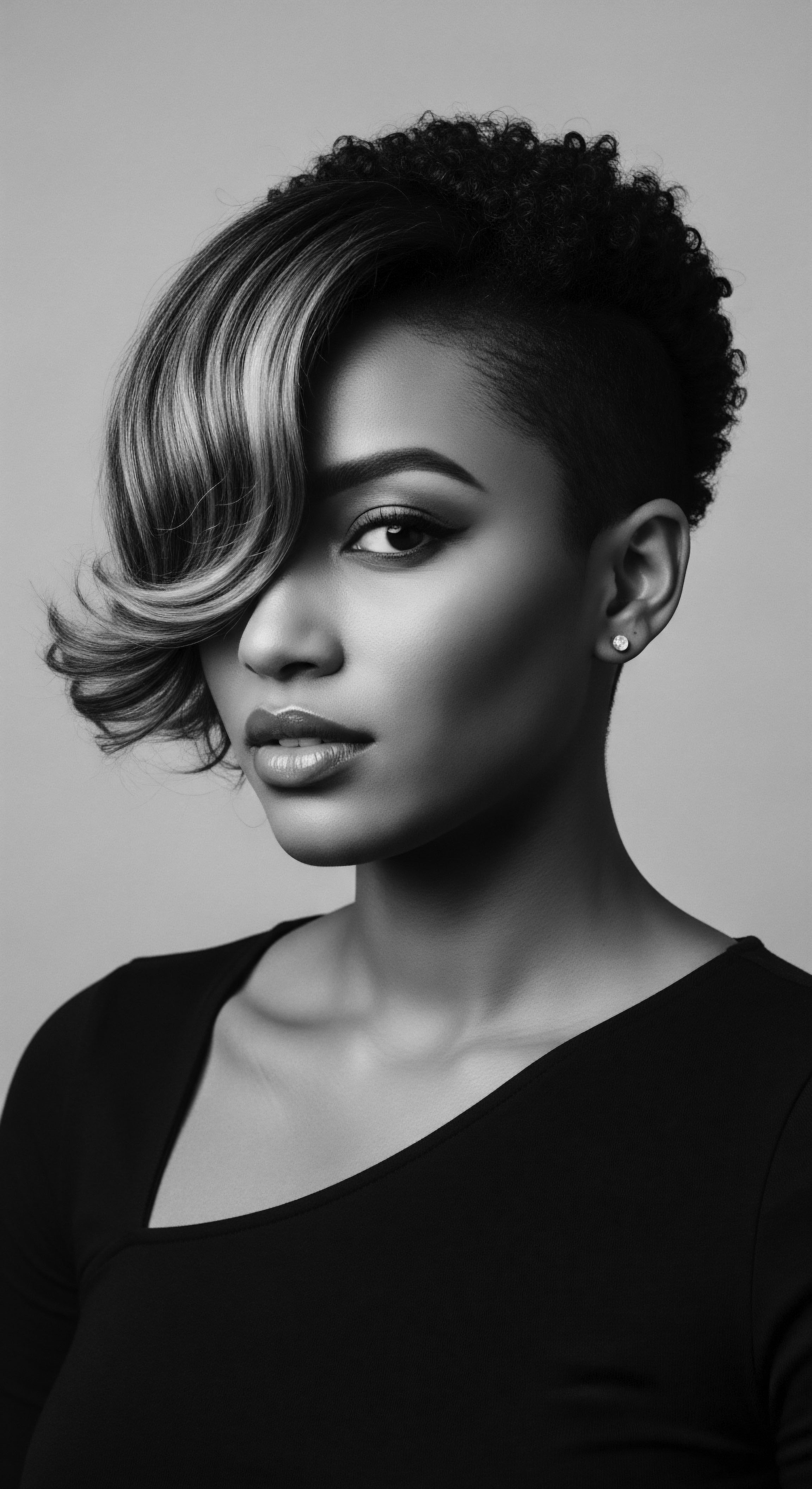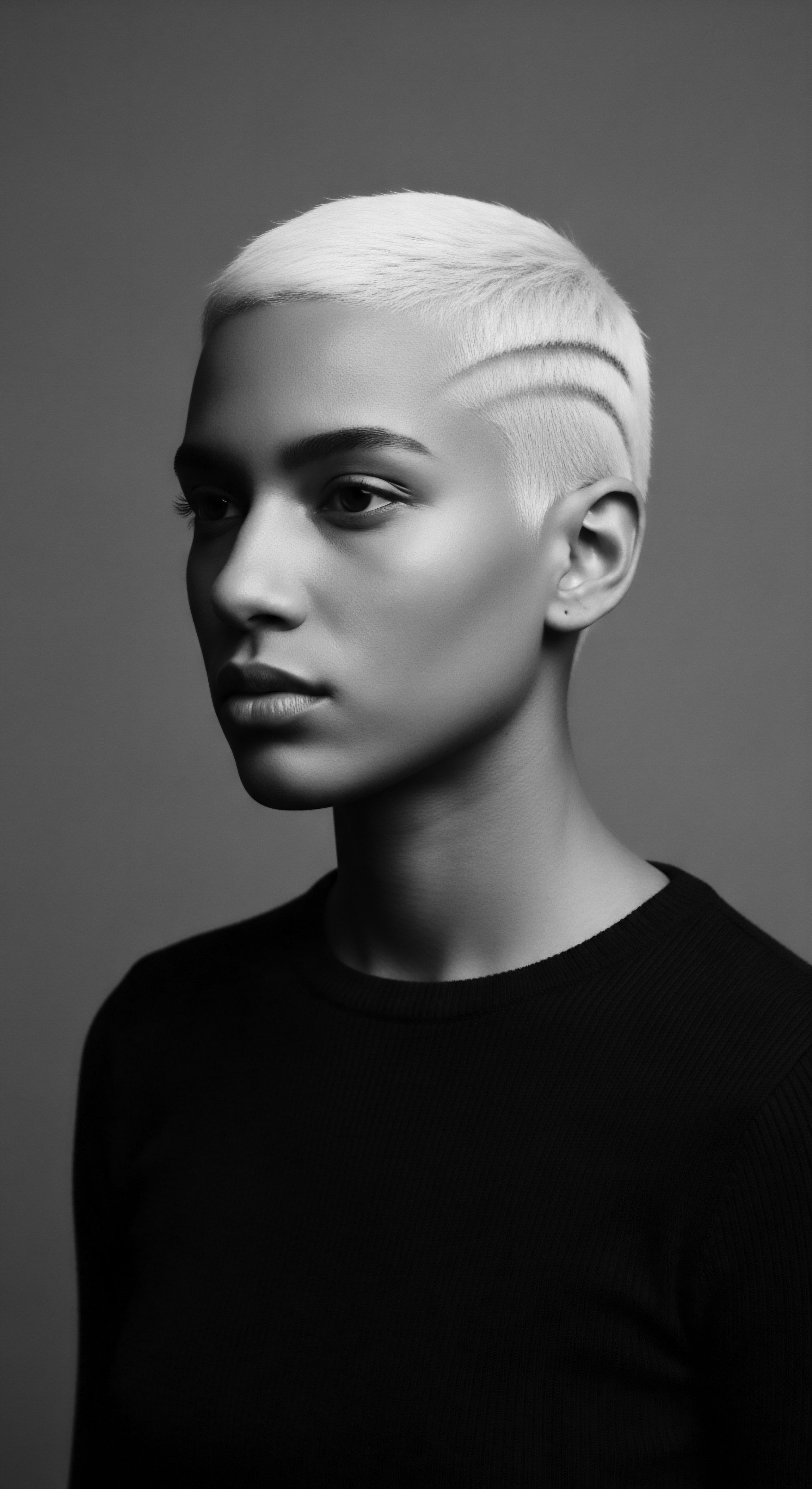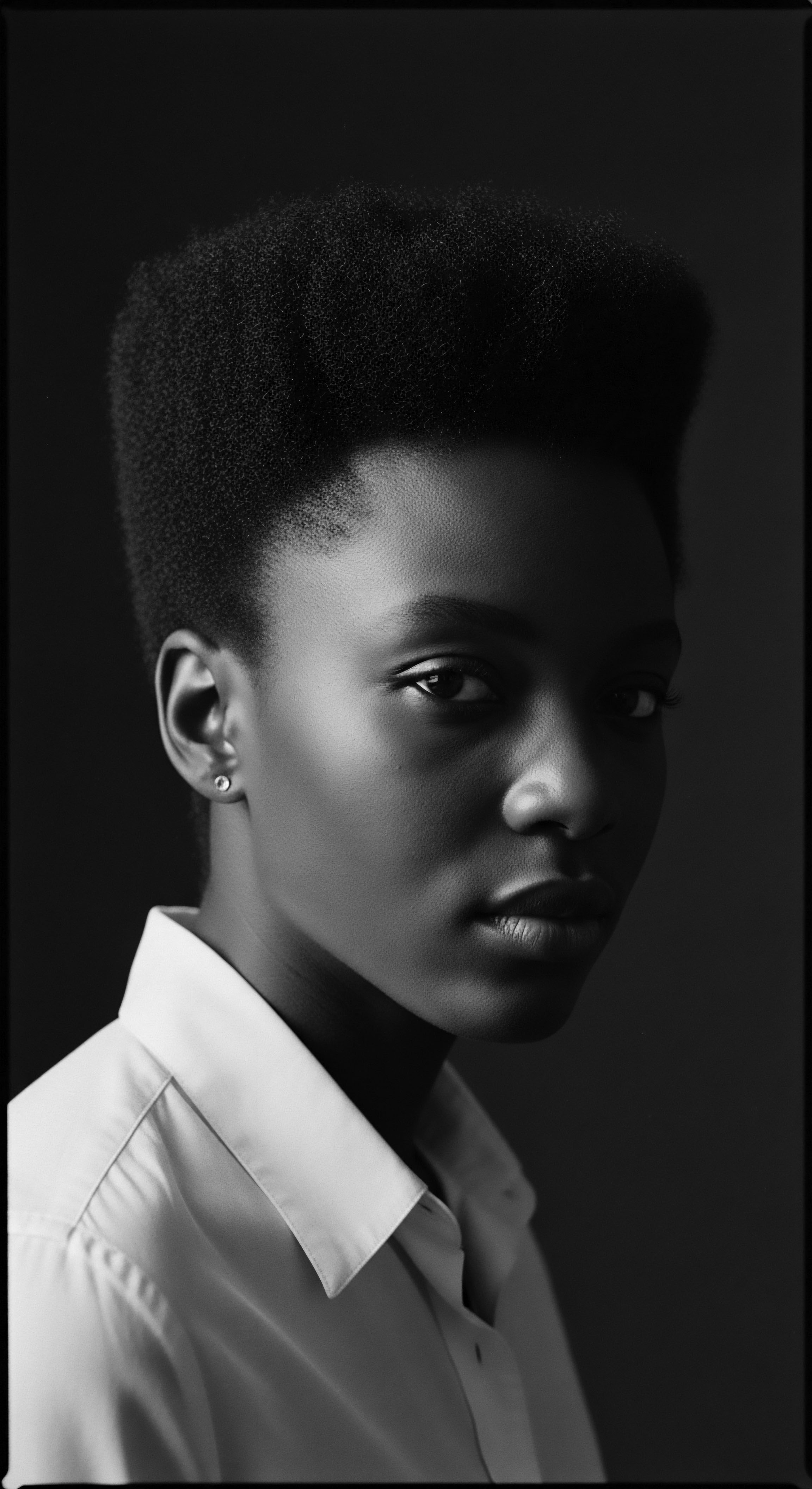
What historical connections exist between shea butter and textured hair care?
Shea butter holds ancient roots in West African heritage, serving as a cherished natural emollient for textured hair care and cultural expression.

What is the biological basis for the unique coiling patterns of textured hair?
Textured hair’s coiling arises from asymmetrical follicle shapes and unique internal protein arrangements, profoundly connected to its rich ancestral heritage.

What traditional methods were used to extract shea butter for hair care?
Traditional shea butter extraction for hair care involved a communal, multi-step process of hand-processing shea nuts, a practice deeply embedded in textured hair heritage.

What is the historical significance of headwraps in protecting textured hair?
Headwraps historically safeguarded textured hair from environmental damage while symbolizing identity, status, and resilience across diverse cultural heritages.

Beyond its physical benefits, how does shea butter maintain cultural identity for textured hair?
Shea butter maintains cultural identity by embodying ancestral wisdom, fostering community, and symbolizing resilience within textured hair heritage.

What historical significance does textured hair care hold for identity?
Textured hair care holds historical significance for identity as a continuous expression of ancestral wisdom, resilience, and cultural legacy.

How does textured hair connect to ancestry?
Textured hair is a biological blueprint, connecting individuals to ancestral climates, cultural practices, and historical resilience.

What historical practices validate shea butter’s benefits for textured hair heritage?
Historical practices deeply validate shea butter's benefits for textured hair heritage through ancestral use for protection, moisture, and styling.

What practices sustained textured hair heritage during slavery?
Enslaved people sustained textured hair heritage through improvised care, coded styling as maps, and communal rituals.

What economic role do women play in the shea industry?
Women are the primary economic force in the shea industry, sustaining ancestral practices and empowering communities through their labor and heritage.

